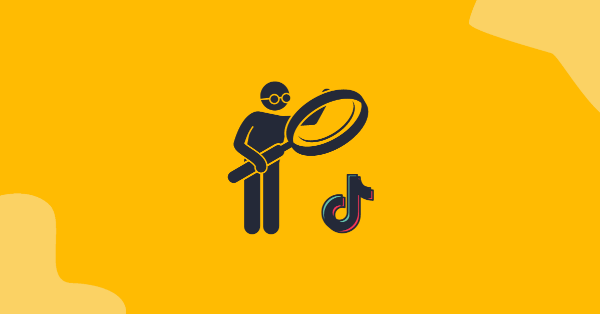![https://adoptoprod.blob.core.windows.net/article/cpqU3eexlE230HVZ8-Q7BQ.png?5687]()
Of course we take all the necessary steps every time, perform initial screenings, tests on all levels, hire psychologists and parapsychologists, check the background, consult our colleagues and talk to carefully selected candidates.
And yet, despite everything, sometimes we end the whole story successfully and sometimes in a way that makes us rack our brains months later and wonder what we missed and where we made a mistake.
The Beginning
Let’s start from the beginning. Common practise is hiring via job ad on some net portal or printed media. We expect a huge amount of applicants here. Quality candidates. My personal experience, next to other colleagues’ experiences, is not quite like that. Concerning quantity, there are usually no fails. The quality fails almost regularly.
Well, it is our professional and moral responsibility to properly check all applications, to devote them the needed attention and evaluate every one of them positively or negatively. While evaluating, we analyse the job’s demands, needed skills, academic education, work experience, specific skills etc. After finishing the first screening/reading, we go over to round two of a merciless fight for the best candidate, which will thrill us with their skills and, above all, loyalty.
Round two has begun, the concentration is on its maximum, unseen dedication and we read, we observe, we analyse. In a sea of epic professional successes, we distinguish reality from what is only its idealistic presentation. Let’s say we managed (or we hope so) to find out what is real and what is not and make a list of candidates we are going to meet, test, talk to. We are careful, it’s an important list. We invite candidates to a meeting in our company’s headquarter.

The first day of the rest of our lives
The day has arrived. The first day of the rest of our lives. Depending on the position, we schedule interviews, tests, assessment centres… everything that comes to mind to, eventually, help us find our ideal candidate. This candidate will make us happy, they will let us make them happy. It’s almost romantic. We have candidates which are used to giving diplomatic answers, candidates which talk about everything we are not interested in, candidates which show signs of aggression and one or two shiny diamonds, which are everything we have ever looked for in a candidate.
The key to success – at least that is what practise has shown so far – is to build a trusting relationship with the candidate
Let’s say there’s two of them. They are bright, they shine, we are dazzled by their skills, experience, gestures, eloquence… oh, we could go on and on. At this point we are already aware that the last round will determine the winner. The final interview, now there are most likely the board members, the management, company owners… the situation is tense, we are so close to winning.
After analyzing and consultations, we have chosen a candidate, we are all happy and satisfied with our successfully completed task. And why wouldn’t we be, as we have chosen the best of the best, the most successful of the most successful, the most loyal of the most loyal (even though they have been leaving their previous employers one after another, but that is the employers’ fault – they just did not appreciate them).
It’s the first working day for our star, our pride and joy (yes, they have become all of that without even starting the computer), we walk them through the hallways, introduce them to our colleagues, don’t miss an opportunity to praise them (and ourselves) for being the best, for achieving remarkable success in company XY (and they let them leave, can you imagine!). It is on, our new colleague has started working (or at least it looks like that), everyone involved in the process is rubbing their hands with satisfaction and admires our great work.
The idyll is shattered once in a while by incidents caused by the new colleague, but we see that as beginner’s mistakes (although they are not beginners but professionals). No matter how hard we try to justify this behaviour, the new colleague keeps causing problems, which now already has started to ruin the harmony in the office. Within the blink of an eye the new colleague has separated from the team and everything seems to be going in the wrong direction. Now we are sure – we have made a mistake. Let’s take a look at what we did not see then.
For example, we are a neat system which values discipline above everything, whereas the new colleague is very casual about their working time, lunch break etc. Others see that the new colleague is obviously privileged and get unsatisfied. They want the same freedom for themselves. The dissatisfaction grows and turns into an uncontrollable mass.
Or, we are a team with a friendly atmosphere. The office is our home. Of course we have problems, but we solve them together. We are happy and sad together. At the moment we are sad, but only because of the colleague which obviously is no team player. More like a team destroyer. But, they are professionals, have skills and fantastic results… how is this possible?
What did we miss?
Neither the text so far, nor the description of the process we went through have mentioned our company culture. Huge mistake. Unfortunately, I have experienced the results of such a failure myself. Judging by the experience of my colleagues – they have, too.
Let’s go back to the beginning
Blinded by our strong wishes and concentration, we did not see the obvious. We did not see our ideal candidate within our organisation. We have seen their skills, results, we even have a psychological profile, and yet we did not define whether their character fits our values.
The question of all questions: How to measure the immeasurable, how to define the invisible. How to get an answer if our new, great, promising colleague fits into our organisation? There are two very simple answers. By getting to know them and talking.
But we have been talking, we have been getting to know them. But, we have neglected something very important – our company’s values and our organisational culture. Everyone who has been given the opportunity to lead or be part of a hiring process has to know the values of the company they work for, which is what we have been talking about just now.
Practise has shown that most information come from conversations with candidates.
We have to know, understand and feel our organisation in order to recognise whether someone fits into. We have to know why we are doing what we are doing, we have to know if we are focused on the results or formalists, if we are friends or (just) co-workers. We have to know how to present our company in order to recognise if the candidate sitting across the table is able to do the same.
Conversation. Practise has shown that most information come from conversations with candidates. By "conversation" we mean more listening and less talking (we talk 20% of the time, the candidates 80%). And when we talk, we ask the well-known open questions which make the candidate talk even more.
The key to success, at least this is what practise has shown so far, is building a trusting relationship with the candidate. When we talk to them in a relatively comfortable atmosphere, when we create a surrounding which makes him or her comfortable – success is guaranteed. That’s when we get answers to questions we did not ask, are not even supposed to be asking.

When the candidate is comfortable (which is not always easy in a specific situation like this), when they feel they can talk to you and when you give them the chance to talk - they will talk. When we have adopted these two very simple rules, it won’t be an issue to very quickly recognise candidates who will not fit into our team or destroy its atmosphere.
The first thing we have to do, what is mandatory, is to remind ourselves of our company’s values, what kind of team we are, what our organisational culture looks like. After we have done that, we have to practise. Practise with co-workers, colleagues, friends.
Leading interviews and conversation are skills that can not be learned by formal education, but only via practise. Therefore, practise talking, asking the right questions and listening. When we have incorporated these two steps into our selection process, we have minimized or even neutralized chances for someone’s best becoming our worst.
After we gain the needed skills (practise, practise!) we will save ourselves much time and effort and for sure get a reward in terms of a successfully fulfilled assignment and a valuable part of the team. And that is quite something.
Are you looking for a recruitment solution that will be like an extended arm in the recruitment process?
Talentlyft helps you optimize your recruitment process from start to finish! Find and attract more qualified candidates and improve candidate experience for in every stage of the recruitment process. Book a call with one of our product specialists to learn more.
Book a quick call 

















